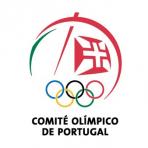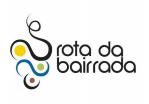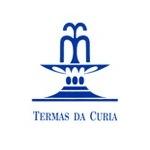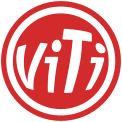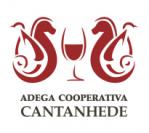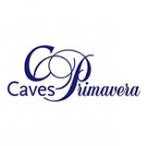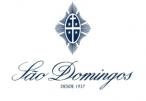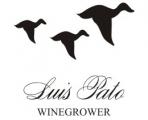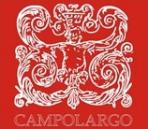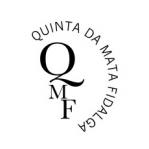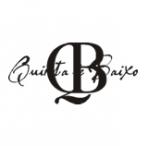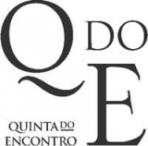must have a maximum of
4-page lenght
CHAPTER NUMBER (to be completed by Editor)
Article Title
Author’s Name and Affiliation
1.1 GENERAL APPEARANCE
This text was produced using Microsoft Word according to these instructions, and these guidelines themselves form a sample manuscript. Please adhere as closely to these guidelines as possible. You may use either PC or Macintosh.
Note that the manuscript will be printed the same size, that is without photo-reduction. Therefore please ensure that all text, including captions and labelling in figures, is sufficiently large as to be easily legible in the final version.
1.1.1 Page Size
The finished, or trimmed, page size for a ‘Royal Octavo’ format book is 234 x 156mm. The type area is 118mm (width) x 190mm (depth).
1.1.2 Text Formatting
The body text is to be produced in a 10-point Times Roman font, preferably with a leading of 11 points. “Leading” is the distance between the bases of consecutive lines of text within a paragraph. Single-spaced text is acceptable. Unless otherwise specified, the font should appear in plain style, i.e. not bold or italic. The text area is 118mm across and 190mm deep, excluding running heads and page numbers (see section 1.2 below). Please manually adjust your page and paragraph breaks to ensure that the page length is consistent and that isolated lines of text do not occur
1.1.3 Chapter Titles, Headings and Sections
The chapter title should be set in 18pt bold Times Roman. The chapter number should be spelt out in 12pt Times Roman capitals.
Main headings should be set in 10pt bold capitals Times Roman. A blank line should be left between the main heading and the first line of the following text.
The first line of text following a main heading should not be indented; all following paragraphs should be indented. No blank lines should be left between consecutive paragraphs. Two blank lines should be left between the end of a paragraph and the next main heading.
Secondary headings should be set in 10pt bold Times Roman, using an initial capital and then lower case. Whether or not the heading immediately follows a main heading, leave two blank lines above a secondary heading and one blank line below.
Tertiary headings (3rd level headings) should be 10pt italics Times Roman, using an initial capital and then lower case. Leave 2 blank lines above and 1 below this heading.
Do not leave any headings at the bottom of the page.
1.2 PAGINATION
The main text of your book is paginated with Arabic numerals, with the first page of Chapter 1 or the first part opening page in the book therefore starting as a right-hand page from 1.
It is preferred that you adhere to the usual right-hand page/left-hand page conventions: each chapter should start on a right-hand page. This may necessitate blank left-hand pages if the preceding chapter ends on a right-hand page. (Remember page numbers do not appear on blank pages.)
1.2.1 Running Headlines
Running headlines (referred to as ‘running heads’) and page numbers will be inserted in the manuscript by the publisher at the top of each page (except for the first page of each chapter, where there is no page number). You will therefore not need to add these. Please ensure you leave sufficient space at the top of your manuscript for these to be inserted.
Please ensure your paper is paginated in pencil at the top right of each page and well away from the text, or on the reverse of the paper. Please begin pagination from page 1.
1.2.2 Beginning of Paper
The paper should not contain an abstract, but should preferably be written with an introduction of approximately one or two paragraphs in length, which serves to summarise the content of the paper.
1.2.3 Chapter Opening Pages
The chapter opening page should begin with the number or title of the chapter (see Figure 1.1). The chapter number should be in 12 point Times Roman bold capitals and should be followed by a blank 12 point line. The chapter title should be in 18 point Times Roman bold. In a multi-authored book the author name is included and should be in 12 point Times Roman and be preceded by one blank 12 point line.
The text following the chapter title or author name should be preceded by two blank lines (this is the default setting on main and secondary headings) and it should finish 185mm below the chapter number at the top of the page and be 118mm wide. No running headlines or page numbers should appear on chapter opening pages or blank pages.
1.2.4 A Full Page of Text
The first line of text should commence 7mm below the running head (if there is one). The text should finish 190mm below the top of the first line of text, and be 118mm wide (see Figure 1.2).
1.3 EQUATIONS
Displayed equations should be indented 6 spaces and numbered consecutively, with the equation number flush right (i.e. right-justified) and enclosed in parentheses. Equations should be numbered sequentially with Arabic numerals within each chapter and referred to in the text as Equation (X.Y), where X is the chapter number and Y the equation number. In multiple-line equations, the number should be given on the last line. Please ensure that equations are numbered correctly, without repetition, and that no important equations are omitted from the numbering scheme. See Equation (1.1) as an example of correct layout and numbering.
Equations should be typed in the same font size as the main text, with superscripts and subscripts 2–3 points smaller. Conventional symbols and SI units should be adopted and used consistently.
1.4 ILLUSTRATIONS AND PHOTOGRAPHS
1.4.1 Illustrations
Illustrations must be clear and unfolded, and their print quality must be even and dark enough for reproduction. If you are creating line drawings by hand, they should be drawn in ink on tracing paper or white paper. Avoid heavy (bold) lettering as this will look unpleasantly dark when printed. If you are creating line drawings electronically, they should be printed out at a minimum of 600dpi (dots per inch—see notes on print quality below).
Avoid shading using tints (which do not always reproduce evenly when professionally scanned at the printers) or colour (which does not reproduce well when the book is to be printed in black and white). If shading is necessary, keep it to 10% density, or not more than 25% density, or use hatching instead to give the effect of tone. When creating line drawings, bear in mind the type area and size each illustration accordingly. Use lower case 8pt Univers (or a similar sans serif face) for labelling line drawings.
Centre illustrations on page width. Leave 5–10mm space above each line drawing, and 5mm space above its caption and 5–10mm space after its caption. Number illustrations according to chapter and position, e.g. Figure 1.3 (figure three in chapter one).
If you prefer to supply the figures to us separately please bear the following points in mind. They will be placed in the text near where they are first referenced, so please leave a suitably sized gap in the text for this. It may be easiest if the illustrations are produced to the size in which they will appear in the book, with labelling produced in an 8 point or 10 point font or other appropriate size. If the illustrations are produced in a larger form, we will need to reduce them and the font size should be adjusted to allow for this.
1.4.2 Photographs
If you have access to a good quality scanner, please scan in your photographs. Colour photographs will be reproduced in black and white unless you have an agreement for colour in your contract.
If you have no scanning facilities, leave adequate space in the text, above a caption, where the photograph is to appear and the printer will do the scanning. For this purpose, please supply sharp glossy prints with good contrast. Again, bear in mind the type area of the page when sizing photographs. Photographs wider or deeper than the type area will be reduced. Each photograph must bear on the back the authors’ names, the title of the book and the illustration number; indicate the top. (For photograph caption see Section 1.4.1.)
1.5 TABLES
Tables should be placed (centre) in the text near where they are first referenced, with captions placed above the tables and sequentially numbered with Arabic numerals and referred to in the text as Table X.Y, where X is the chapter number and Y the table number. Type the captions in 8 point. Tables should be numbered sequentially, see Table 1.1. Leave about 5 mm space between the caption and table, and about 10mm space above the figure caption and below the table.
1.6 LISTS
Lists, whether set out with roman numerals (i, ii, iii, etc), arabic numerals, or bullet points, should be set out with half a line space before and after (or a single blank line) the list.
• here is
• an
• example
Lists should be used sparingly, as they can give the book the character of a set of notes or a report, rather than a polished text.
1.7 FOOTNOTES
Footnotes should be avoided if possible. If used they should be typed in 8 point text at the bottom of the pages where they are cited. Use superscript lowercase arabic numerals to index footnotes, starting with “1” in each chapter.
1.8 REFERENCES
References should be placed at the end of the book if the work is not highly technical and there are relatively few references. If there are many references they should be placed at the end of each chapter. Within the text, references should be cited thus: Bloggs (1984) found that...., or: It was observed (Bloggs, 1984) that.... If there are two authors, use both names linked by ‘and’. For three or more names use just the first author’s name followed by ‘et al.’ (in italics).
Place the full reference at the end of the paper, arranged exactly as in the examples below. Start the first line of each reference at the left hand margin and indent subsequent lines by three spaces. Arrange references in alphabetical order, following the hierarchy used below. When one author has multiple references, single-author works take priority, followed by two-author works, then multi-authored works (which are listed chronologically).
Do not abbreviate journal titles; give them in full in their original language. Indent all but the first line of each reference by three spaces.
Bloggs, C., 1994, The male elephant as a domestic pet. In Macroveterinology, Vol.1, 2nd ed., edited by Bloggs, C. (London: University of Dagenham Press), pp. 1271–1290.
Bloggs, C. and Triffid, D. 1988, The Economics of Feeding Large Pachyderms, (Paris: Treetop & Sons).
Bloggs, C., Triffid, D. and Carpel, B.G., 1979, Keeping your elephant fully nourished. In Proceedings of the 9th Annual Conference on Animal Welfare, London, edited by Morris, J., (London: Parrot Press), pp. 1–13.
Bloggs, C., Triffid, D. and Carpel, B.G., 1982, A review of today’s captive breeding techniques. Journal of Animal Husbandry, 15, pp. 237–245.
1.9 SUBJECT INDEX
A thorough subject index is an integral part of a book and should be included at the end. It is best to compile this when the final manuscript is completed. Please consult Taylor & Francis to decide at what stage this should be done.
1.10 PRINT QUALITY
The typeset manuscript must be in its final form and of good appearance because it will be filmed and printed directly without any editing. It is essential that the ‘camera-ready copy’ be absolutely clean and unfolded. There should not be corrections on the printed pages, nor should adhesive tape cover any typeset lettering. Please note that the pages should be originals, not photocopies.
Once you have completed your manuscript, read it through again to make sure there are no errors, then it is ready to be printed out. Please use good quality white paper. Printing should be done on either a laser or good quality inkjet printer. A minimum of 600 dpi output is acceptable. Dot matrix printers are not acceptable.
Please supply one set of printed out text and illustrations, plus a disk if files have been created electronically. Please label your disks clearly and sequentially with your name, the book title, the disk’s contents and the package you are using.
1.11 POINTS TO NOTE
a. Where a subheading follows a heading, the space between the two should be no more than the space which follows a heading.
b. Please ensure that quotation marks are paired correctly, hence “good quotes” rather than ”bad quotes.”
c. Italicised words should not be produced in a text processor’s mathematical mode as this will generally result in an unusual spacing of letters.
d. Use a hyphen (-) for compound words (e.g. “two-dimensional”), an en-dash (–) to link numbers, nouns or names (e.g. 220–240 Volts, electron–positron collisions, the Einstein–Newton–Blair paradox), and an em-dash (—) to link sentences or clauses—this is what we would regard as a “normal” dash.








